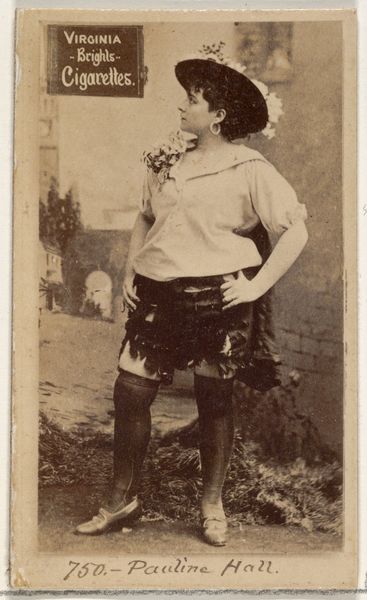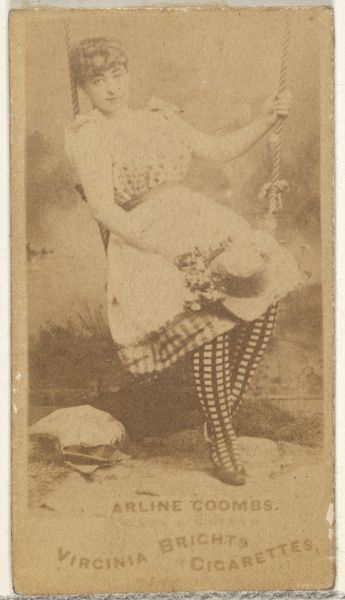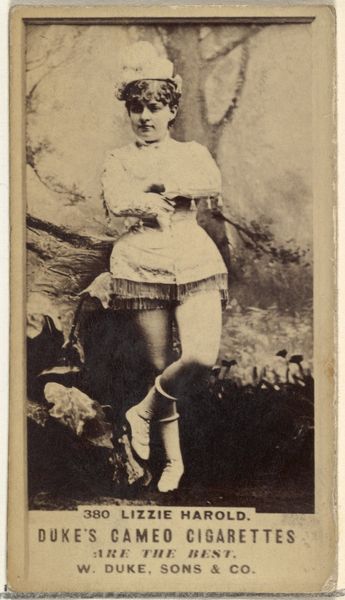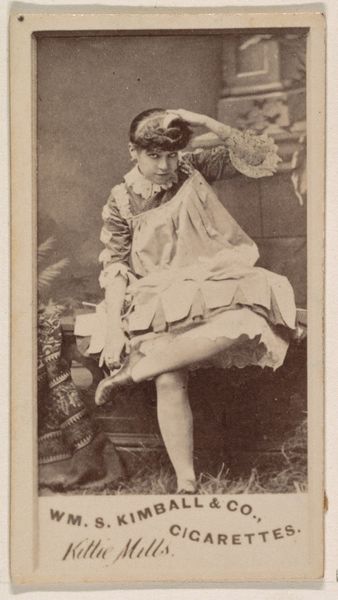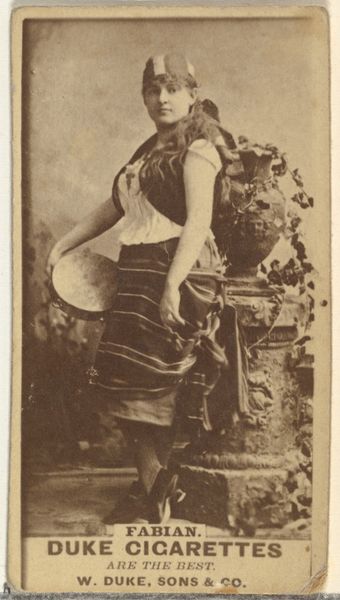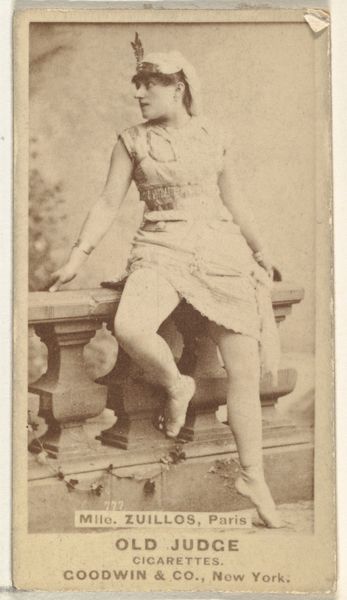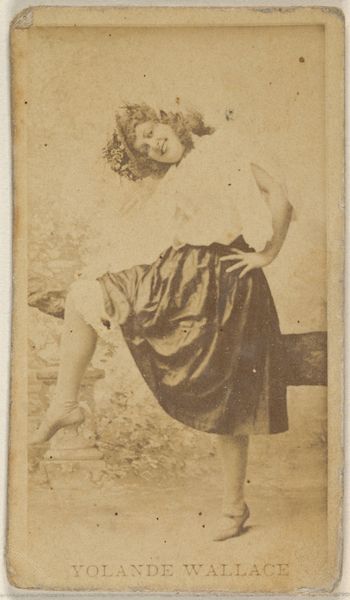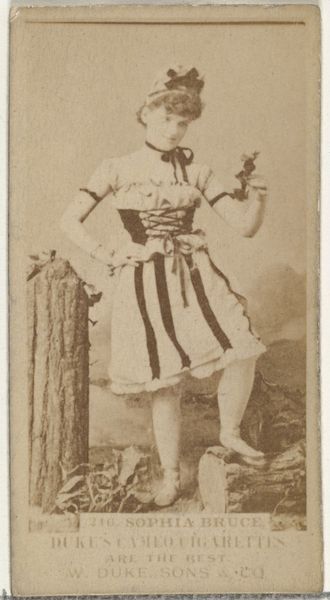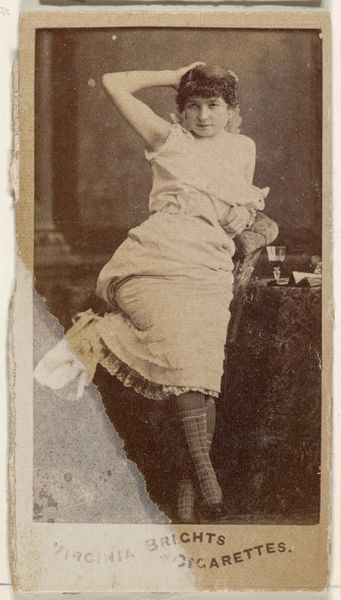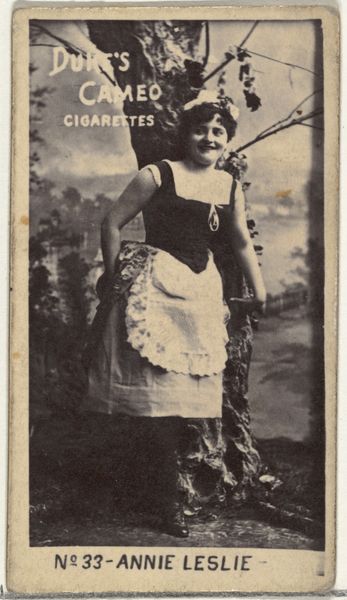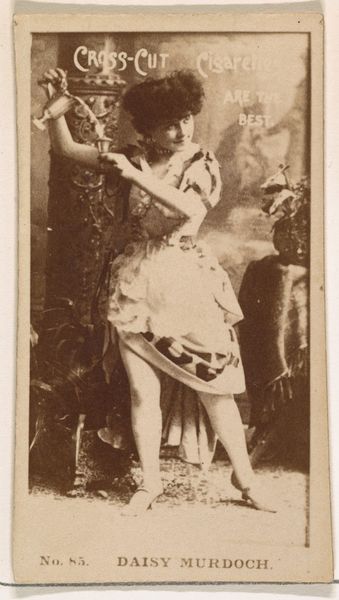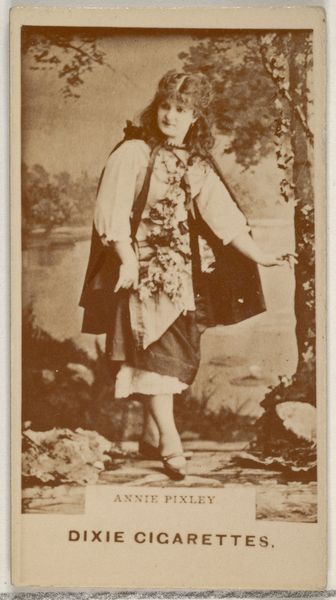
Card Number 317, Victoria Ferris, from the Actors and Actresses series (N145-3) issued by Duke Sons & Co. to promote Cross Cut Cigarettes 1880s
0:00
0:00
drawing, print, photography
#
portrait
#
drawing
#
aged paper
#
toned paper
# print
#
old engraving style
#
photography
#
men
#
genre-painting
Dimensions: Sheet: 2 11/16 × 1 3/8 in. (6.8 × 3.5 cm)
Copyright: Public Domain
Editor: This is Card Number 317, Victoria Ferris, from the Actors and Actresses series. It's an 1880s print from Duke Sons & Co., originally a cigarette promotion. What strikes me is the subject's pose – it's theatrical, almost exaggerated, for a simple portrait. What do you see in this piece, aesthetically speaking? Curator: Focusing on the formal aspects, one immediately notices the carefully constructed composition. The diagonal line created by the subject's body, juxtaposed with the verticality of the stacked stones, generates a dynamic tension. The photographer has employed chiaroscuro – that interplay of light and shadow – to sculpt the figure and add depth to the print. It appears as if a print was made of the photography to achieve the appearance of an old engraving. Editor: So, it's the interplay of lines and light that create the interest, rather than what's depicted? Curator: Precisely. Observe how the textured surfaces, from the plaid skirt to the rough stonework, create a rich tactile quality. The photographer’s placement of these textures and objects—her adornments, the corset, and even that metallic pail at her feet—enhances the overall aesthetic impact, far outweighing, in my estimation, the figure itself. Editor: That’s interesting. I was initially drawn to the figure, but focusing on the textures changes how I see the entire work. Thank you for clarifying! Curator: Indeed. Understanding how the elements—the light, shadow, and form—are organized is paramount. Thinking along formalist lines grants us another path to decode the aesthetic. It gives us language and an aesthetic apparatus for making these distinctions, wouldn’t you agree?
Comments
No comments
Be the first to comment and join the conversation on the ultimate creative platform.
